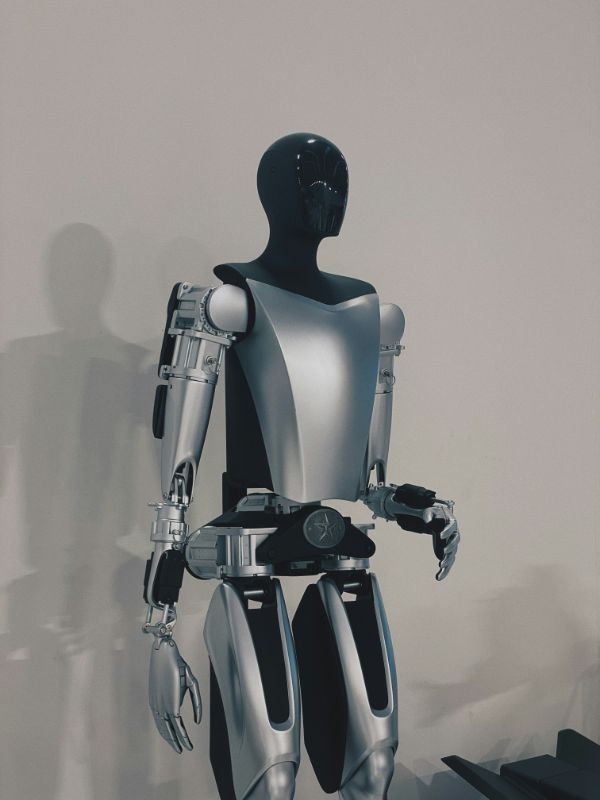Tesla showcased its Optimus humanoid robot at the Beijing Robot Conference, placing it in a transparent display box beside Tesla vehicles. In contrast, Chinese companies presented humanoid robots performing tasks such as fetching drinks or playing musical instruments, offering a more dynamic demonstration of robotic capabilities.
According to Elon Musk, Optimus could eventually fold laundry, cook, clean, or even teach children, hinting that such advancements might push Tesla’s valuation to $25 trillion. Musk also stated that Tesla plans to test these robots in its factories next year, although it’s still uncertain how effective they will be in real-world applications.
This year’s World Robot Conference in Beijing set a record with 27 new humanoid robots debuting, a testament to the rapid investment and development in the robotics field. Over the past decade, approximately 100 billion yuan ($14.01 billion) has been invested in China’s robotics sector, according to Wei Cao, a partner at Lanchi Ventures. His company alone manages assets valued between 15 and 20 billion yuan.
Cao predicts that within the next year or two, there will be a commercially viable use case for humanoid robots in manufacturing, capable of prioritizing multiple tasks.
Showcase of new humanoid models and innovations
Several new humanoid robots were featured at the conference. Agibot, for example, plans to deliver its first batch of robots by mid-October, with an initial run of 300 units expected in November. The company markets its robots for various roles, including sales representatives, tour guides, and industrial part pickers.
Stardust Intelligence also made waves at the event, showcasing its Astribot S1 humanoid, which had previously been demonstrated folding shirts and pouring wine. The startup, founded in December 2022, uses artificial intelligence for imitation learning, enabling its robots to replicate actions after observing them.
Other humanoid robots from lesser-known companies, such as Galbot and Turui, were shown performing tasks like moving soda cans from shelves and placing items into baskets. While some movements appeared jerky and slow, it was unclear whether these actions were autonomously performed or remotely controlled.
Despite some technical limitations, the sheer number and variety of robots on display marked a significant increase from last year. Many of the attendees, particularly young students, were drawn to the innovative showcases.

Although Tesla and other U.S. companies are generally considered one to two years ahead of their Chinese counterparts in robotics, Cao noted that over 95% of the humanoid supply chain is self-sufficient within China. He also questioned why Tesla chose not to demonstrate Optimus in action at the event, despite the promotional videos showing its advanced capabilities. Tesla has yet to respond to requests for comment.
Jeff Burnstein, president of the U.S. Association for Advancing Automation (A3), spoke at the event via video conferencing, highlighting virtual demos from humanoid startups like Agility. Burnstein revealed that many of these robots are currently in pilot programs, with some already being implemented in practical applications. A3’s own humanoid robotics conference is scheduled for October 7 in Tennessee.
Specialized focus in humanoid robotics
Humanoid robotics companies are taking a specialized approach by focusing on perfecting individual human-like functions rather than replicating an entire human being. For instance, Limx Dynamics, a Shenzhen-based startup, presented the P1 research robot. With two legs that can balance and navigate staircases, the P1 can regain equilibrium after being pushed, showcasing advancements in mobility and stability.
Limx Dynamics, founded two years ago and backed by Alibaba, has developed humanoids capable of transporting goods in warehouses and adapting to dynamic environments. At the conference, other companies displayed robotic components like gears and advanced robot hands.

During a panel discussion, Shigeki Sugano, president of the Robotics Society of Japan, predicted that by 2030, humanoid robots will be able to perform basic household chores, provide nursing care, and assist with medical treatment both independently and in cooperation with humans. These robots will also be able to express emotions, but fully autonomous humanoids aren’t expected until after 2050.
Sugano identified battery life as a major hurdle. Currently, humanoid robots can only operate for about two hours before needing to be recharged, limiting their utility in long-term tasks.
(Tashia Bernardus)
